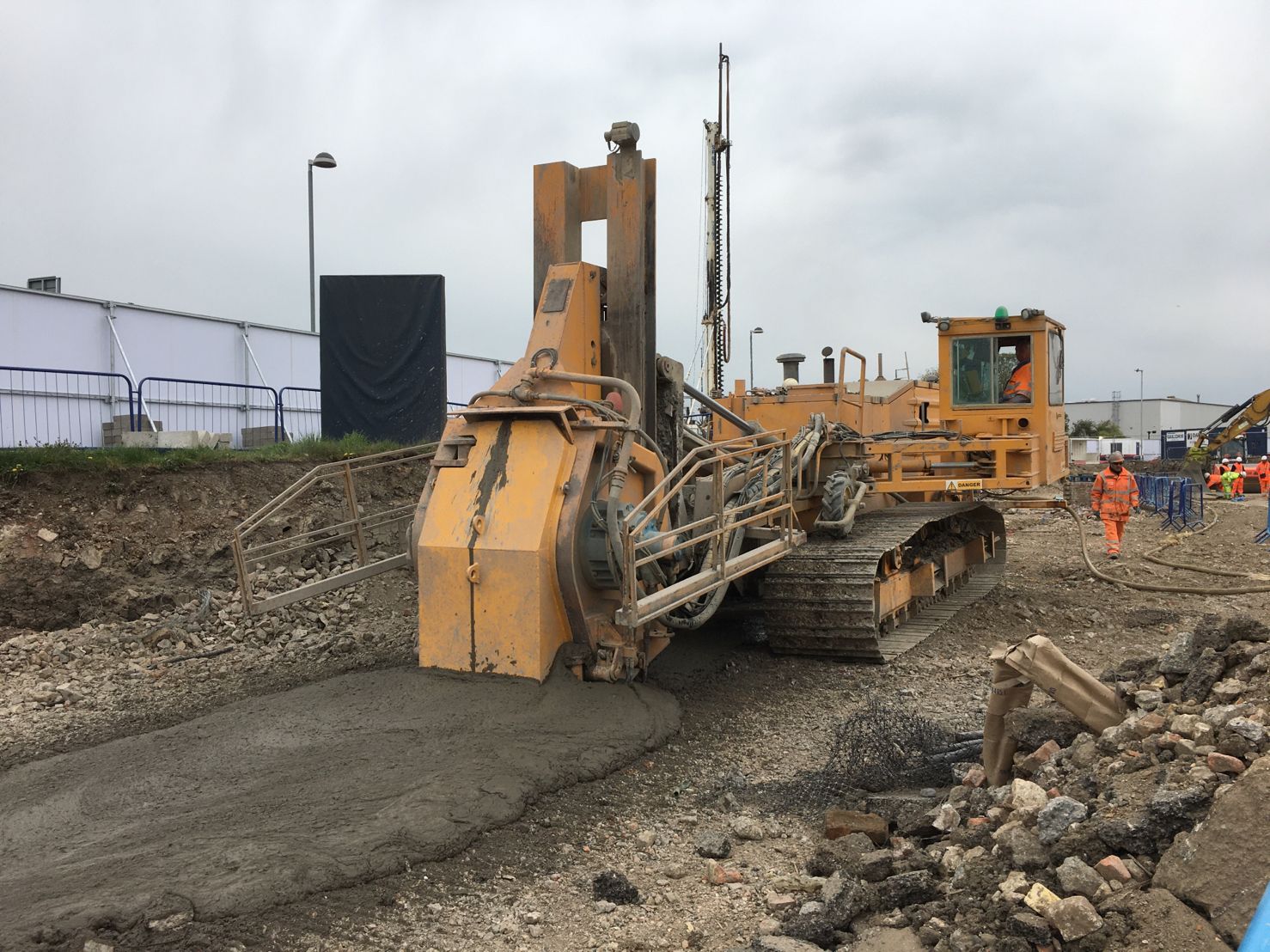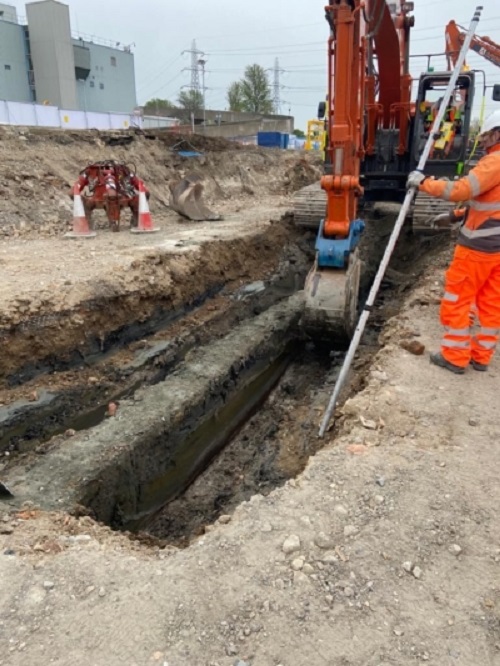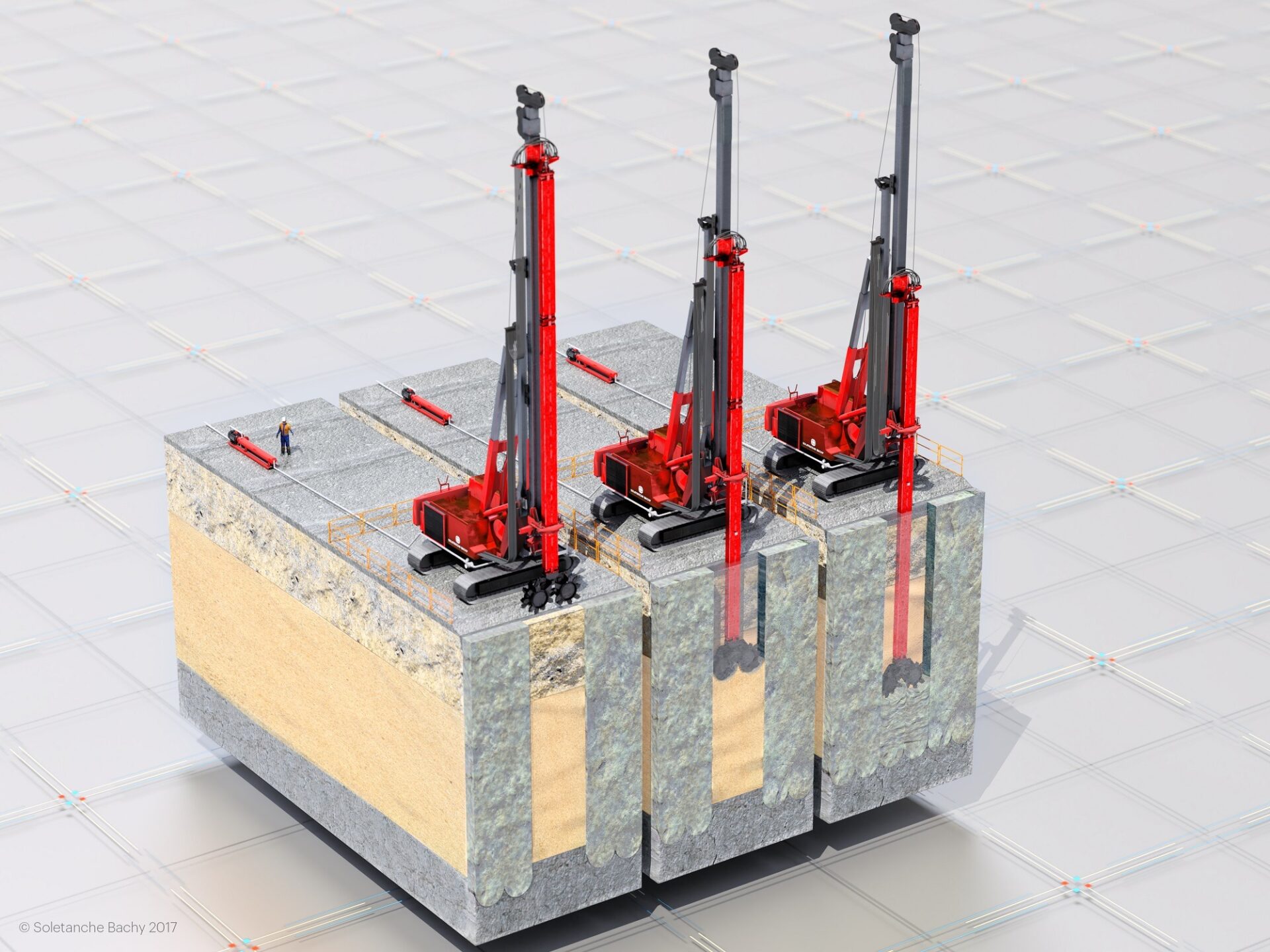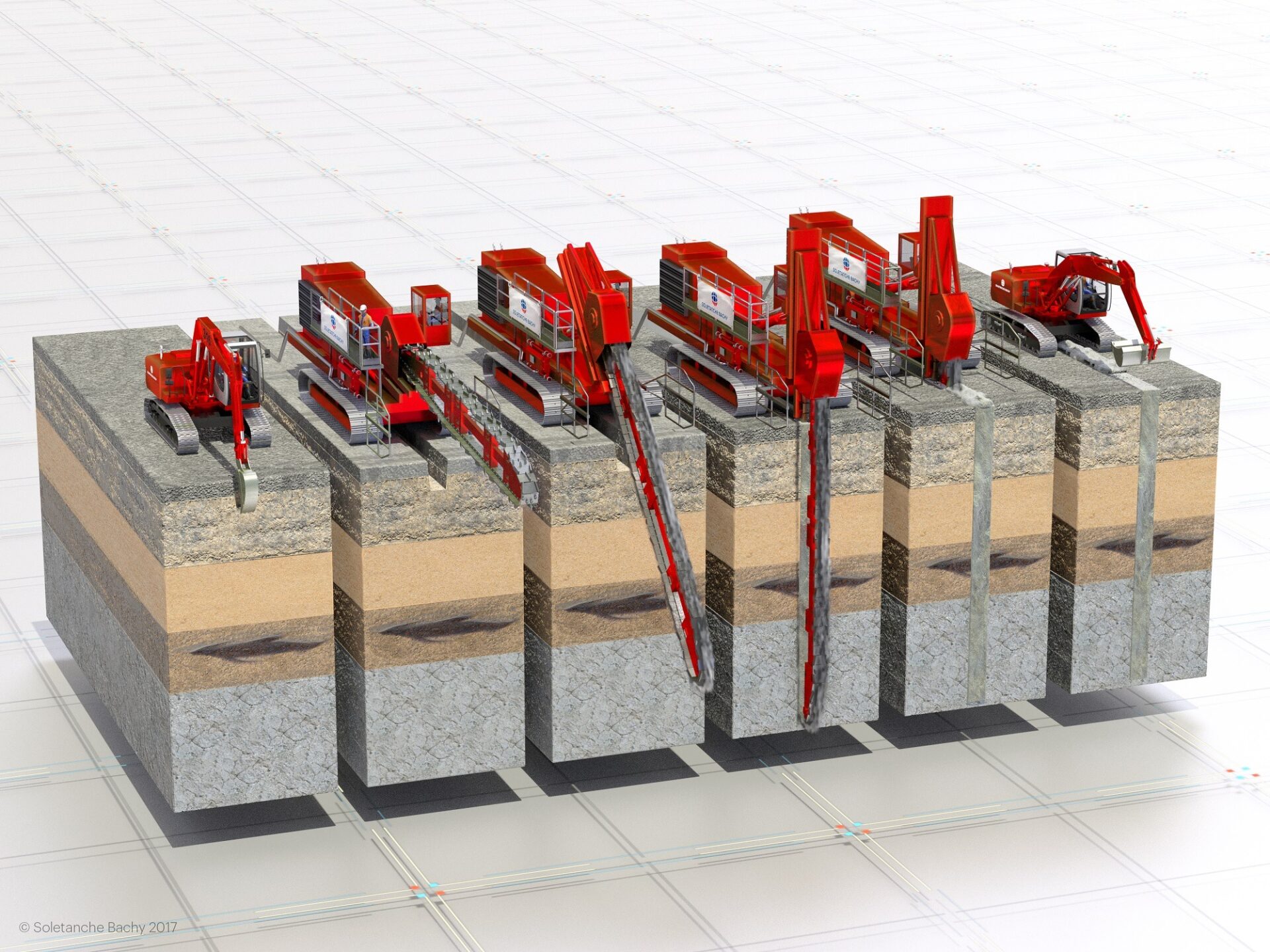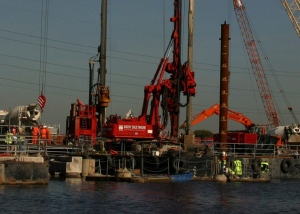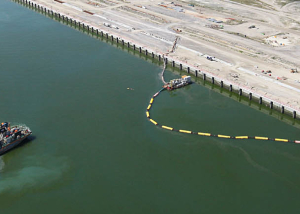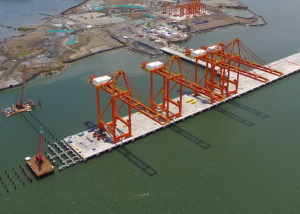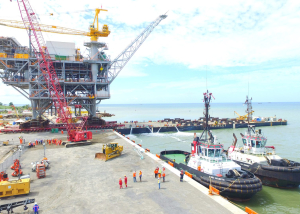Cut-off walls are predominantly to provide an embedded low permeability barrier to mitigate the flow of groundwater and any contaminants that it may contain.
HOW IT WORKS
The selected method is dependent on ground conditions and client requirements. Bachy Soletanche offer a range of different techniques to construct the embedded cut-off wall, these include:
Slurry Walls
Slurry walls are usually formed using an excavator or crane mounted grab, commonly dug under head of self-hardening cement bentonite slurry. A trench is formed to the required length and depth, with the width usually being around 600mm. Typical permeability in the range of 1×10-9 can be achieved, in line with industry standards. Excavated material is either disposed of off-site or reused elsewhere on the project.
The slurry remains in situ and acts as a subsurface barrier to ground water flows. The use of a geo-membrane embedded within the wall reduces water flows still further and, if required, prevents gas migration.
Geomix® Walls
This soil mixing process uses the in-situ soil as the construction material. The soil is de-structured as the rig-mounted mixing tool is drilled to the required depth. As the tool is withdrawn from the bore, cement grout is injected and mixed in-situ with the de-aggregated soils. The resulting modified soil constitutes the Geomix wall.
Trenchmix® Walls
This innovative process involves the in-situ mixing of the soil with a binding agent, using trencher machine. The cementitious soil-mixed material then self-hardens, forming a barrier approximately 400mm wide, with a greatly reduced permeability. Due to the in-situ mixing of soils, as opposed to total replacement, the requirement for handling and disposals of arising is significantly reduced.
Permeable Reactive Barriers
Usually installed within a slurry wall, permeable reactive barriers act as an ‘active gate’, through which groundwater is funnelled, allowing any pollutants to be captured and/or treated by filters installed within the gate. The materials within the gate vary depending on the type of contamination and required treatment. Upon passing through the gate, the treated groundwater returns to the local groundwater regime. The main advantage of using this funnel approach is that a smaller reactive area can be used to target the plume, leading to a more cost-efficient solution.
Capability: Depending on the nature of the ground conditions and the technique employed, walls of up to 50m in depth can be installed. As the process is continuous, the length of the wall is not a constraint.
Advantages: Depending upon the selected technique, advantages can include; relatively quick to install, avoids cumbersome handling operations and removal of spoil. Can achieve very low permeabilities, prevent gas migration, allow in-situ treatment of groundwater. Significant depths can be achieved.
